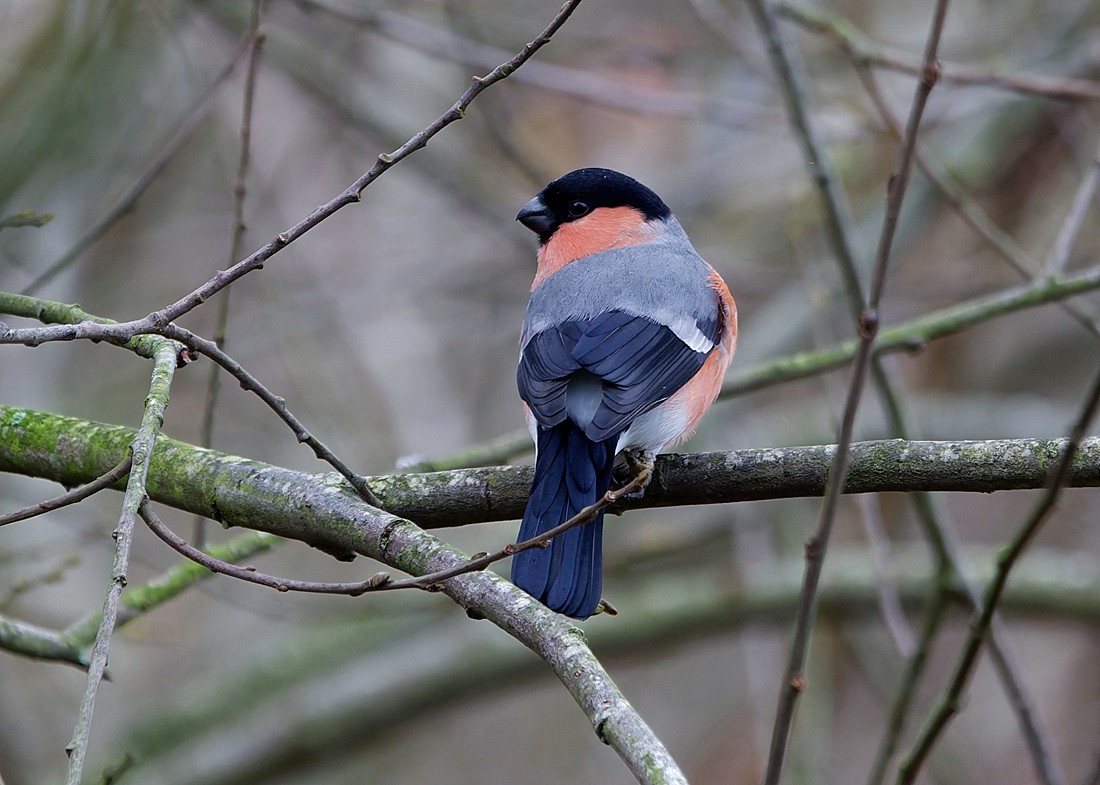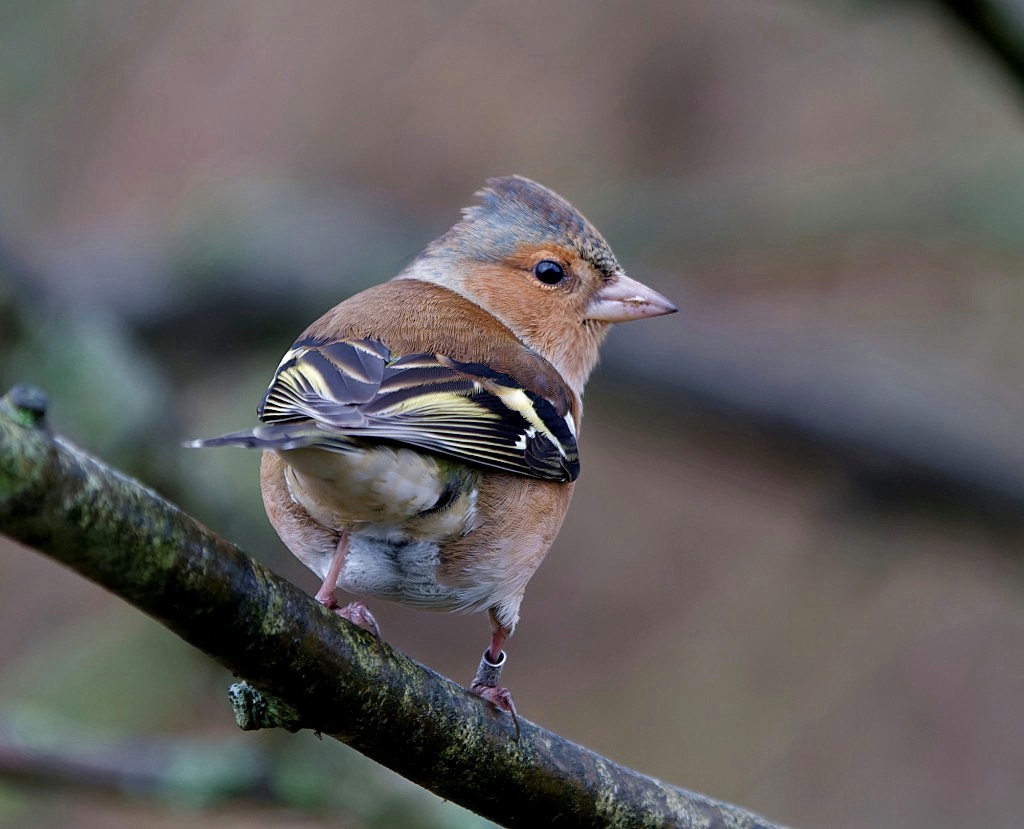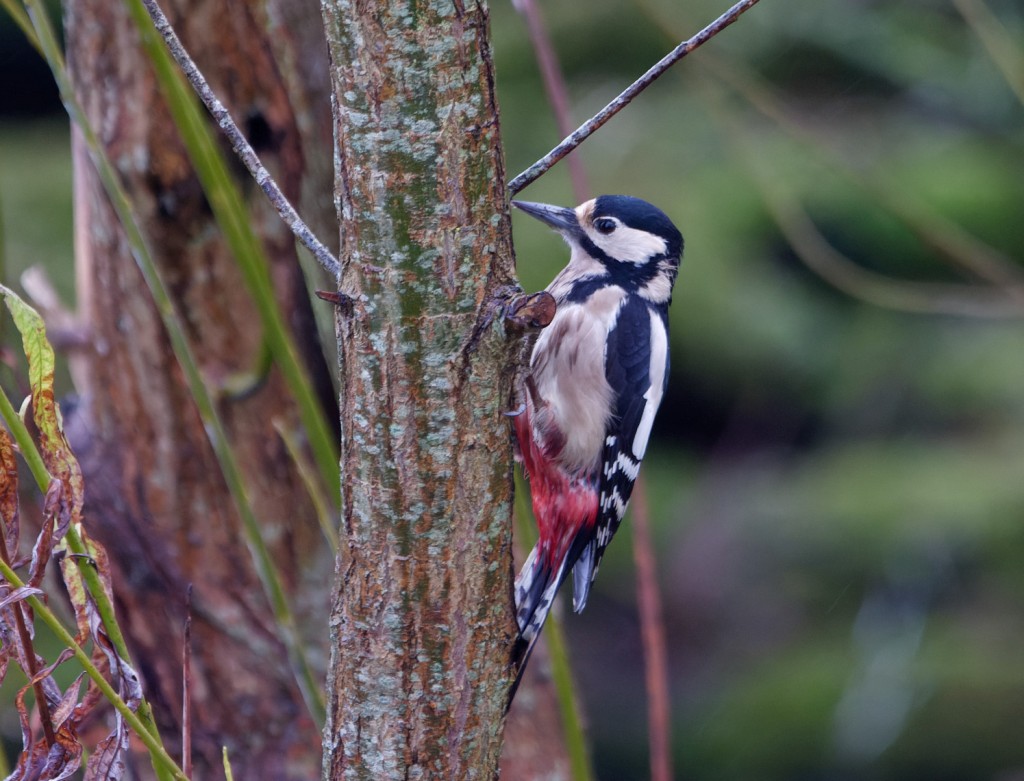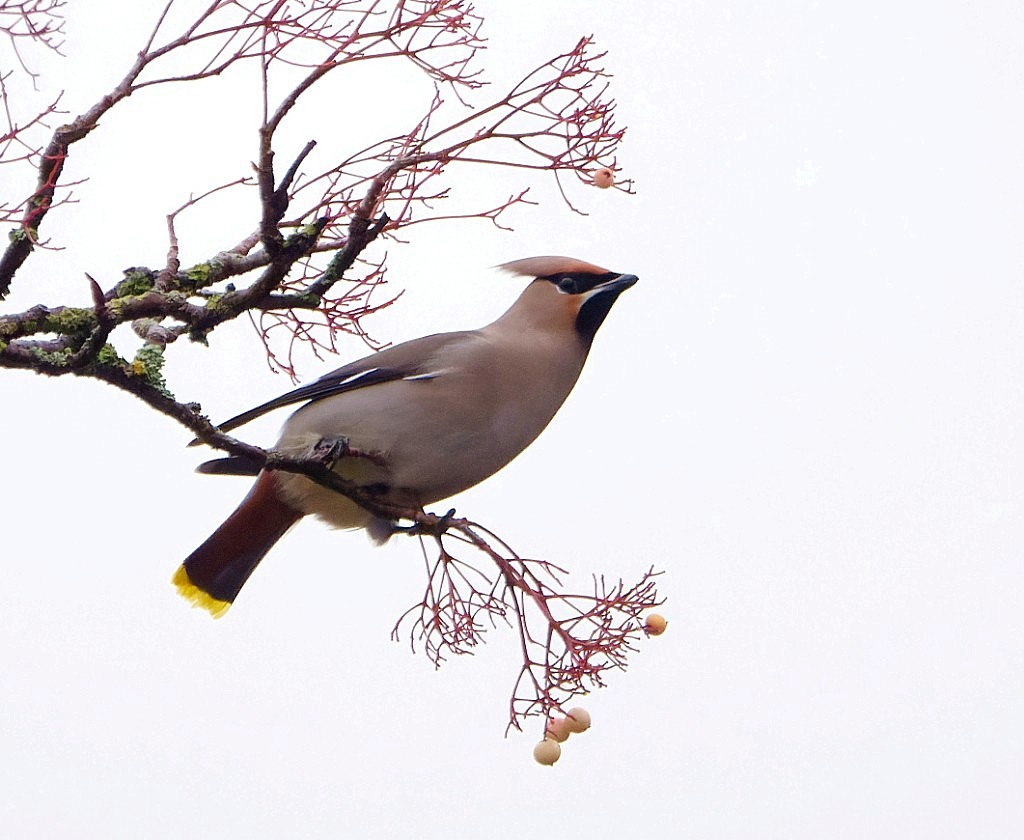Woolston Eyes Monthly Sightings
2023-12-24
It’s been a wet and blustery week, though the wildfowl are definitely benefiting, particularly on the No.4 bed wetland where more than 1,500 ducks are present. The highlight has been the first-winter drake Scaup which has been associating with the Tufted Ducks and Pochard. Inevitably the presence of so many potential prey items has attracted predators, with both Peregrine and Marsh Harrier hunting the bed. At the southern end of the bed is a large area of partially-flooded woodland and we’ve raised a further £38,000 to improve it for breeding Willow Tits and amphibians. Our contractor has just started work to create a new bund, raise the track and install sluices. The work should be completed in a week or so and then we’ll be able to start raising the water levels. Allied to a winter coppicing regime this should produce the kind of tangled, early stage damp woodland which will be ideal for our Willow Tits. Photo of a male Bullfinch Cheers David Bowman
Submitted by: David Bowman
2023-12-17
Wildfowl (WeBS) Count 16/12/23 Canada Goose 68, Greylag Goose 72,Mute Swan 35, Grey Heron 3, Shelduck 7, Shoveler 133, Gadwall 202, Wigeon 5, Mallard 154, Teal 1007,Pochard 10, Tufted Duck 454, Pintail 1, Water Rail 4, Moorhen 15, Coot 348, Little Grebe 15, Great Crested Grebe 1, Lapwing 32, Snipe 4, Black-headed Gull 161, Common Gull 2, Herring Gull 2, Lesser Black backed Gull, 12, Cormorant 12
Submitted by: Brian Martin
2023-12-16
It was the December Wetland Birds Survey (WeBS) today, with Dan and I covering Bed 4, while other members of the wardening team covered the other three beds. As well as finding around 1,700 wetland birds on Bed 4, we had some good supplementary sightings, particularly the Siberian Chiffchaff which showed and called well as Dan was following me on to the bed. Not surprising that one of these scarce winter visitors from the far north-east of Russia turned up, given the number of wintering Common Chiffchaffs around the bed. Our final total of 11 from just a part of the bed is unprecedented for us at this time of year. Who knows how many there are across the whole of the Reserve? The wildfowl were constantly being disturbed by hunting Peregrine and Marsh Harrier but we managed to get some good counts, including: 1 Pintail, 5 Wigeon, 10 Pochard, 3 Water Rails, 3 Snipe, 316 Coot, 109 Shoveler, 121 Gadwall, 700 Teal and 246 Tufted Ducks. The link is to a very brief video from the past couple of visits shows: Jay, Stock Dove, Willow Tit and Brambling from the Morgan Hide feeders and one of today’s Common Chiffchaffs. https://youtu.be/rE_FjXokfsE Cheers David Bowman (with Dan Owen)
Submitted by: David Bowman
2023-12-14
It’s been a relatively quiet week, with wildfowl only just starting to return to the lagoons after the the recent cold snap. This morning started with light drizzle before becoming sunny and mild for the time of year. On No.4 bed a single first winter drake Scaup was picked out by Dan, loafing among a flock of 276 Tufted Ducks and a handful of Pochard. When we checked the sluices around the wetland, we realised that both cells are now at optimum capacity, for the first time since construction started more than three years ago. This should make the deeper, western cell more attractive to diving ducks, while the shallower eastern cell has more emergent vegetation for breeding wildfowl. Other sightings of note on the bed included: 2 Stonechats, 1 Chiffchaff, 1 Marsh Harrier, 20 Redwings and 1 Willow Tit. Over on No.3 bed, wildfowl have been slower to return, though good numbers of finches are present, 2 Willow Tits were visiting the Morgan Hide feeders, 2 Chiffchaffs were noted around the bed and a hunting Marsh Harrier put in an appearance. Photo of a male Chaffinch Cheers David Bowman (with Dan Owen)
Submitted by: David Bowman
2023-12-10
Yesterday dawn brought torrential rain, which carried on till mid-morning when the sun finally broke through. So, it was a chance to sit in the Morgan Hide and see what was visiting the feeding station, particularly as the recent hard freeze has driven off most of our wintering wildfowl off the lagoons. As ever, there were good numbers of finches, with 60 Greenfinches, 80 Chaffinches and 7 Bullfinches present. Patient watching then produced a singles of Brambling, Willow Tit, Nuthatch and Coal Tit, the latter two of which were once very scarce visitors to the Reserve but are now regular at all the feeding stations. When the weather improved there was a bit of movement, with 100Pink-footed Geese, 20 Fieldfares and 200 Lapwings passing over. Photo of a Great Spotted Woodpecker Cheers David Bowman (with Brian Baird)
Submitted by: David Bowman
2023-12-05
It was mainly a task-based morning, checking on progress with scrub clearance on No.4 bed and with the coppicing programme for Willow Tits on No.1 bed. Birds along the way included drake Goldeneye and a flock of 23 Lesser Redpolls. The flock of nine Waxwings which I’d watched fly over No.4 bed towards Warrington town centre on Thursday morning had subsequently been relocated in Battersby Lane, Warrington. Our efforts to see them there on Saturday had proved fruitless, so on my way home I decided to give it another try. This time I was luckier, as a single Waxwing was feeding in the usual stand of Rowans, though it was very flighty and flushed every time a passer by walked past. It repeated that behaviour three times before I left at 1.00 pm but will, hopefully stick around and maybe be joined by a few more. Photo of the Waxwing Cheers David Bowman
Submitted by: David Bowman




